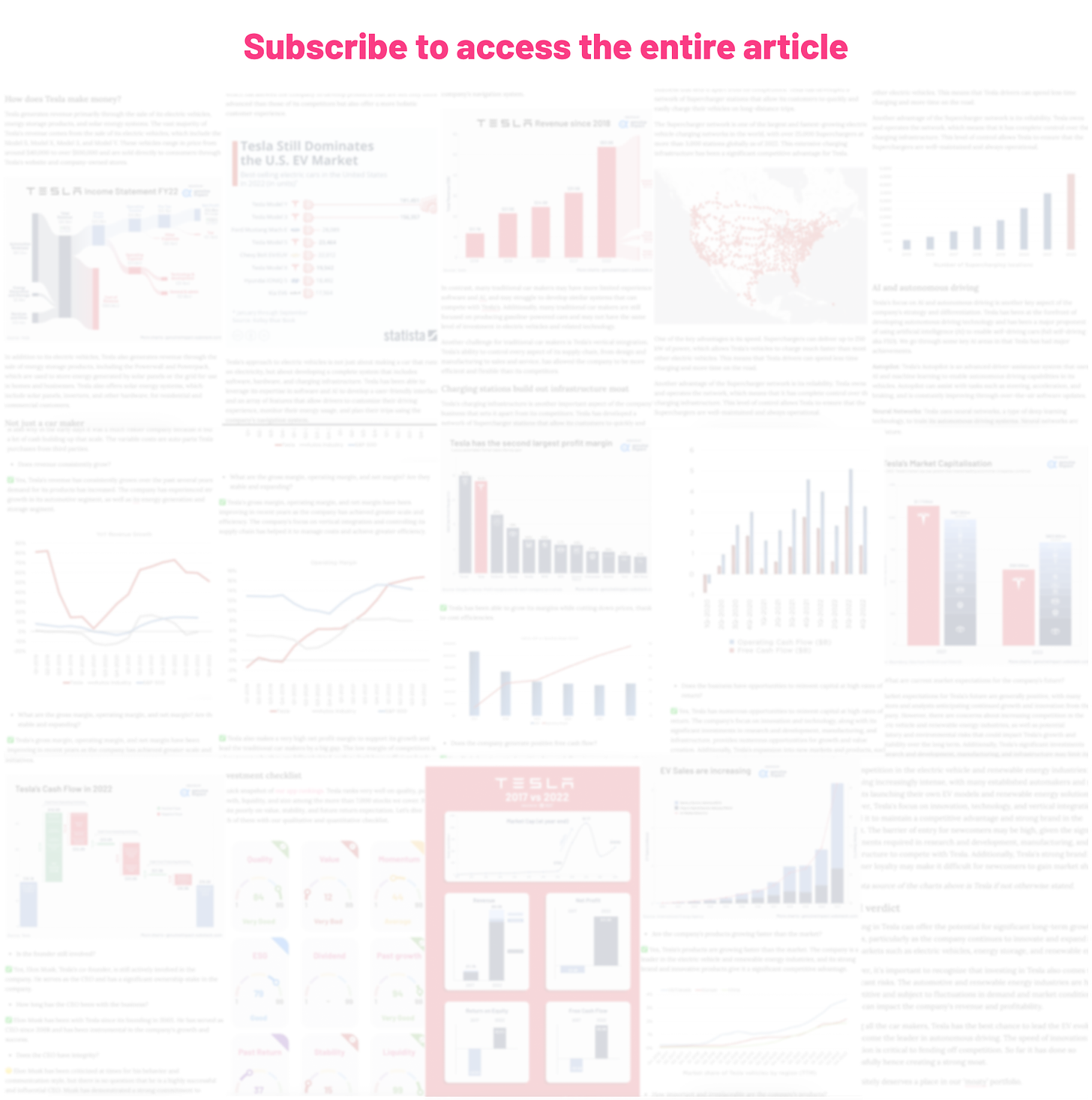In its early days, Tesla almost died a few times
Today, Tesla is widely recognized as a leader in the electric vehicle and renewable energy industries, with a strong brand, innovative technology, and a vertically integrated approach to manufacturing.
However, in the early years, Tesla struggled with production issues, quality control problems, and a lack of public awareness and acceptance of electric vehicles. The company also faced financial difficulties and struggled to secure funding for its growth and expansion initiatives.
In 2004, Elon Musk, who was an entrepreneur and investor at the time, became one of Tesla's primary investors and joined the company's board of directors. Musk saw the potential for electric cars to revolutionize the automotive industry, and he became a driving force behind Tesla's growth and development.
One of the key events in Tesla's history was the launch of its first production vehicle, the Tesla Roadster, in 2008. The Roadster was a high-performance electric sports car that was based on the Lotus Elise. The Roadster demonstrated that electric cars could be fast and fun to drive, and it helped to establish Tesla as a leader in electric vehicle technology.
Another key event in Tesla's history was the launch of the Model S sedan in 2012. The Model S was Tesla's first vehicle that was designed and built entirely in-house, and it was the first electric car to offer a range of over 200 miles on a single charge. It helped to establish Tesla as a serious contender in the car market.
Where would Tesla be without Elon Musk?
One of the key things that Musk did early on was to invest heavily in the development of new battery technology. Musk recognized that batteries were a key bottleneck in the adoption of electric cars, and he believed that developing a better battery would be critical to the success of Tesla and the broader electric vehicle industry.
Musk has also been involved in the development of Tesla's manufacturing processes. Tesla's approach to manufacturing is highly automated, with robots and machines handling many of the tasks that would traditionally be done by human workers. This has allowed Tesla to produce cars at a lower cost and with higher quality than many of its competitors.
One of the things that Musk focused on that set Tesla apart is its focus on vertical integration. Tesla designs and manufactures a much higher percentage of the components that go into its vehicles than competitors, which allows it to control the entire supply chain better and ensure high quality and efficiency. This level of control also allows Tesla to be more flexible and responsive to changes in the market such as raw materials inflation.
You can also find some of our past charts on Tesla and sustainability topics:
👋 Heads up, the rest is our premium content. They are 17 more visualizations and quality analyses on Tesla.
Pay to unlock, and you’ll have an edge against others in understanding Tesla.
We will cover these topics:
How does Tesla make money: its business and revenue model
Market analysis on electric vehicles, autonomous driving, energy storage, and charging stations.
Opportunities beyond passenger vehicles: trucks and robotics
A thorough checklist to examine Tesla’s strengths and weaknesses
Final verdict on Tesla and what I do with Tesla stocks
👀 To give you a sense of what the full article looks like, we snapshot of it below.
We have an earlybird special offer. But you only have until April 30th to grab it before it’s gone.
Even better, you can reimburse it with your company as your learning budget. We have a template for you here.






